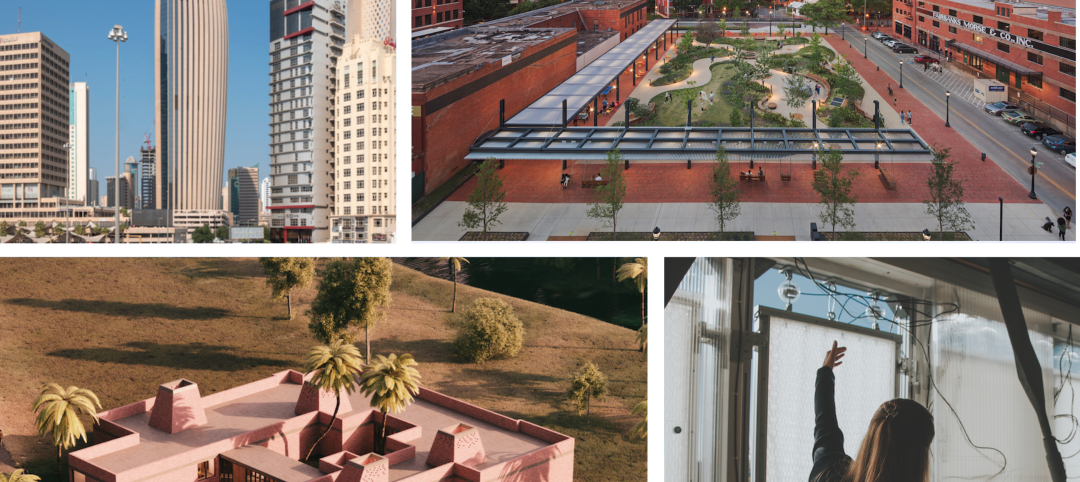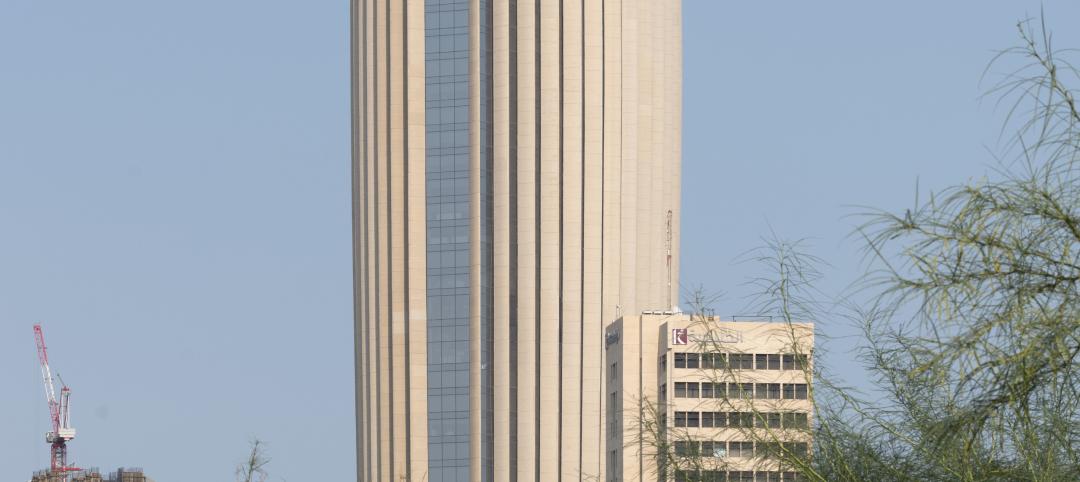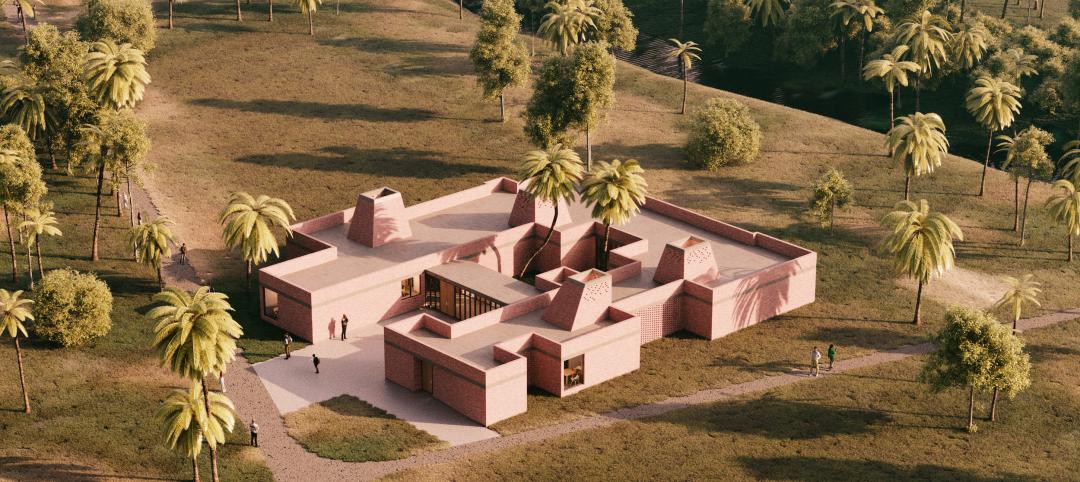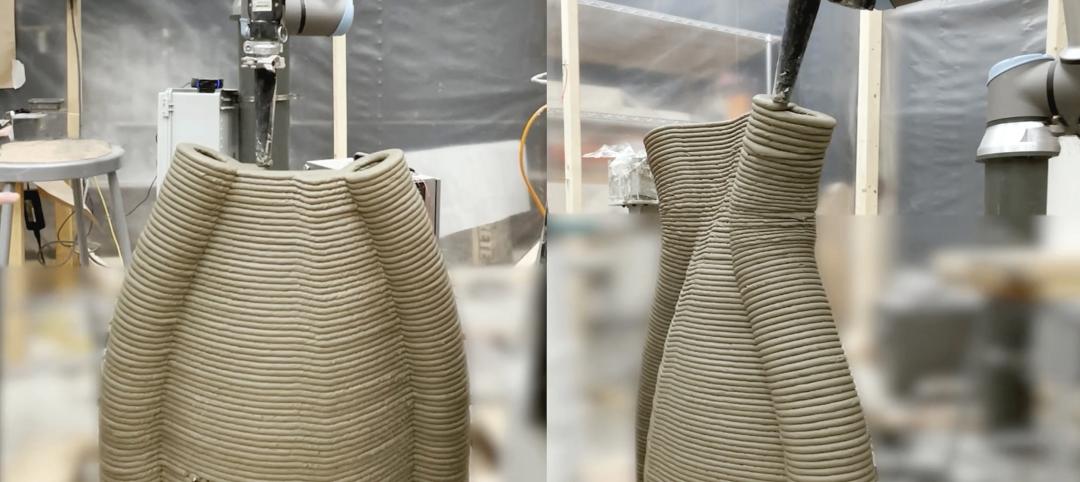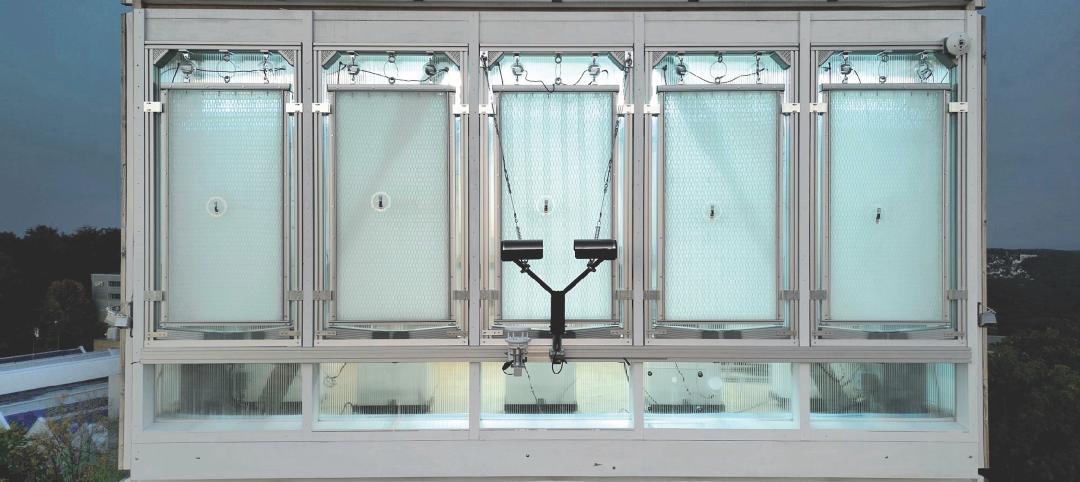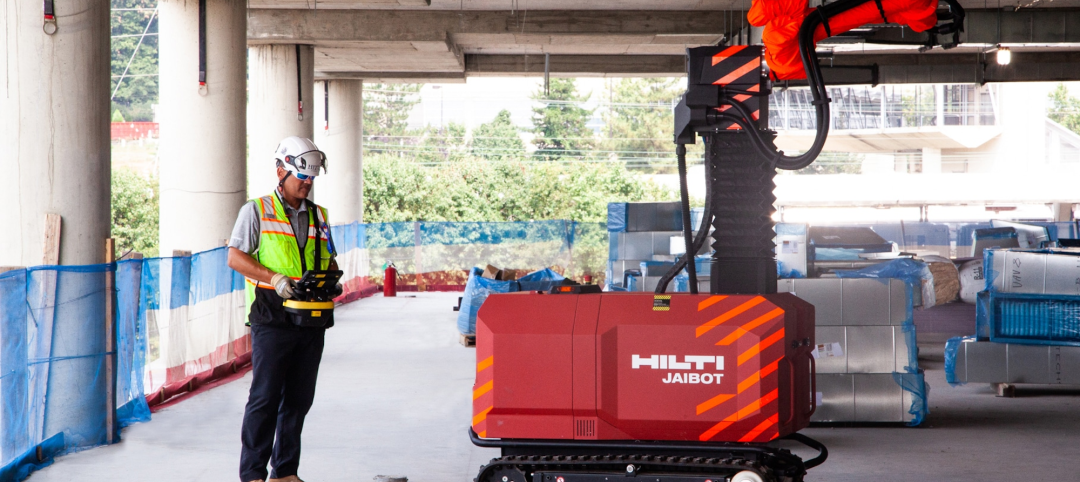In a medical emergency, the faster a patient receives attention, the better their prognosis becomes. Natural disasters such as hurricanes and floods can make transferring a patient to a hospital difficult. What if the hospital could come to the patient?
That question spurred the creation of the Medical Motherboard (MM), a modular, scalable mobile hospital that can adapt to multiple crises at any scale. Designed by CallisonRTKL, the MM combines artificial intelligence, advanced medical equipment, electric vehicle technology, and drones into one life-saving package.
See Also: Public canopy system can be reconfigured by drones on the fly
MM is built on a platform that acts as the backbone of the system. Based on electric vehicle technology and automobile platform concepts, the platform houses the power bank, telecommunications equipment, computer systems, and support infrastructure that allow the modules to plug and play on its surface. A spine rises from the platform and contains water filtration and docking stations for minor modules.
 Courtesy CallisonRTKL.
Courtesy CallisonRTKL.
Minor modules act as the support services to the major modules (more on those later). They consist of services like registration and triage kiosks; water collection, purification, and storage; power supply; supply storage; equipment storage; and a drone-assisted resupply station. The registration and triage modules are equipped with AI that asks victims questions and helps first responders interview and classify them in terms of urgency. AI can then call for help or direct victims to the appropriate major module for further care. The major modules are medical care facilities like exam rooms, imaging suites, and operation rooms. The combined module space for each MM is 8x24 feet; side extensions can be attached.
The modules can be mixed and matched to best suit the situation. Once the appropriate modules are selected, they are moved onto the platform and locked into place. The onboard MM computer will then identify, catalogue, and connect the modules into a single network.
The MM is then towed on site like a technology packed camper trailer. Hydraulic stabilizer legs and a folding solar roof panel deploy to complete the set up. A rooftop air purifier system begins to ventilate the major modules.
In the event of a large-scale disaster, groups of MMs can be deployed together with complementary modules to create an entire mobile hospital.
Related Stories
Design Innovation Report | Apr 27, 2023
BD+C's 2023 Design Innovation Report
Building Design+Construction’s Design Innovation Report presents projects, spaces, and initiatives—and the AEC professionals behind them—that push the boundaries of building design. This year, we feature four novel projects and one building science innovation.
Design Innovation Report | Apr 19, 2023
Reinforced concrete walls and fins stiffen and shade the National Bank of Kuwait skyscraper
When the National Bank of Kuwait first conceived its new headquarters more than a decade ago, it wanted to make a statement about passive design with a soaring tower that could withstand the extreme heat of Kuwait City, the country’s desert capital.
Design Innovation Report | Apr 19, 2023
HDR uses artificial intelligence tools to help design a vital health clinic in India
Architects from HDR worked pro bono with iKure, a technology-centric healthcare provider, to build a healthcare clinic in rural India.
3D Printing | Apr 11, 2023
University of Michigan’s DART Laboratory unveils Shell Wall—a concrete wall that’s lightweight and freeform 3D printed
The University of Michigan’s DART Laboratory has unveiled a new product called Shell Wall—which the organization describes as the first lightweight, freeform 3D printed and structurally reinforced concrete wall. The innovative product leverages DART Laboratory’s research and development on the use of 3D-printing technology to build structures that require less concrete.
Cladding and Facade Systems | Apr 5, 2023
Façade innovation: University of Stuttgart tests a ‘saturated building skin’ for lessening heat islands
HydroSKIN is a façade made with textiles that stores rainwater and uses it later to cool hot building exteriors. The façade innovation consists of an external, multilayered 3D textile that acts as a water collector and evaporator.
Transportation & Parking Facilities | Mar 23, 2023
Amsterdam debuts underwater bicycle parking facility that can accommodate over 4,000 bikes
In February, Amsterdam saw the opening of a new underwater bicycle parking facility. Located in the heart of the city—next to Amsterdam Central Station and under the river IJ (Amsterdam’s waterfront)—the facility, dubbed IJboulevard, has parking spots for over 4,000 bicycles, freeing up space on the street.
Concrete | Jan 24, 2023
Researchers investigate ancient Roman concrete to make durable, lower carbon mortar
Researchers have turned to an ancient Roman concrete recipe to develop more durable concrete that lasts for centuries and can potentially reduce the carbon impact of the built environment.
Sponsored | Resiliency | Dec 14, 2022
Flood protection: What building owners need to know to protect their properties
This course from Walter P Moore examines numerous flood protection approaches and building owner needs before delving into the flood protection process. Determining the flood resilience of a property can provide a good understanding of risk associated costs.
Giants 400 | Nov 14, 2022
4 emerging trends from BD+C's 2022 Giants 400 Report
Regenerative design, cognitive health, and jobsite robotics highlight the top trends from the 519 design and construction firms that participated in BD+C's 2022 Giants 400 Report.
AEC Tech | Apr 13, 2022
A robot automates elevator installation
Schindler—which manufactures and installs elevators, escalators, and moving walkways—has created a robot called R.I.S.E. (robotic installation system for elevators) to help install lifts in high-rise buildings.



